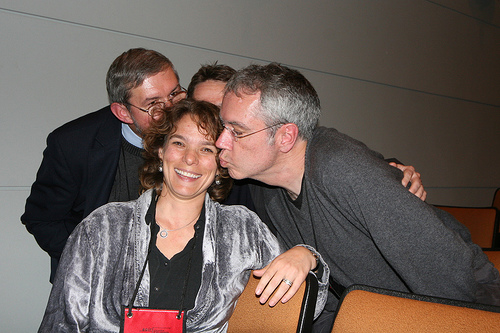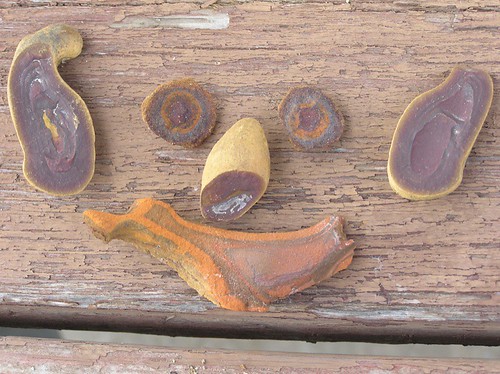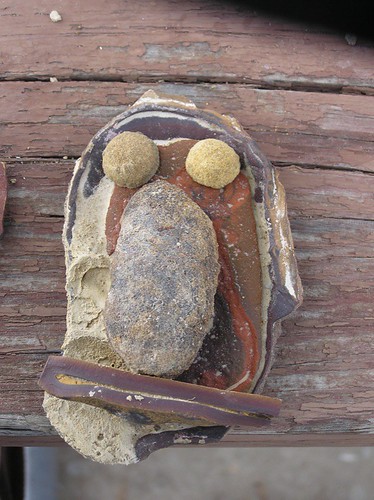The Place of Mystique in the Internet Age
Monday, October 29, 2007
The Detroit Free Press had a piece over the weekend by their pop critic, Brian McCollum, contemplating the loss of mystique in rock and roll now that there’s so very much information available online. He writes:
There’s a reason they call the Internet the great leveler: As technology increasingly lets us get a glimpse into the star machine, peeking behind the scenes and absorbing all manner of minutiae about our favorite acts, the gap between audience and artist gets ever smaller. Details and developments are recorded, shared and analyzed at a dizzying pace and volume.
YouTube, MySpace, message boards, band chats, DVDs, reality shows — for a fan, it’s all hard to resist. Knowledge is tempting. Information promises relief, the chance to unravel mysteries and satisfy questions. But today’s rat-a-tat-tat multimedia culture presents us with a hard question about our relationship with our artists: Is more actually less?
The barrage of easy information makes it difficult for the mystique to stay intact. We get access, the mystique takes a hit, we quickly lose interest, we move on.
I’m not so sure that we move on when the mystique is gone, but other than that, yeah. Later in the article he asks:
But are we losing something valuable when we keep the curtain pulled back? You don’t have to be a cynic to suspect so. Mystique long played a special role in the music fan experience. It helped build tighter bonds to artists and their music. It strengthened their grip on our imaginations. It gave them staying power.
“To me part of the magic was that you imagined what John Lennon was like, or what these songs were about. You read your own meaning into the music and the people who were making it. That was part of what made you an active fan — you engaged on a personal level,” says Glenn Gass, 51, a music professor at Indiana University. “When you get a little too close they get a little too ordinary. And you don’t want your stars to be ordinary.”
In contrast to those who just whine about the evil changes the internet has wraught, McCullum’s got the wisdom to realize this is how it is, and that’s not going to change:
But here’s the deal: There’s no turning back the clock, and until somebody unplugs the Internet, the changes in our relationship with artists are probably here to stay. The idea of pop musicians as untouchable icons might one day be seen as a dusty relic from a time when artists had mystique by default. For those future musicians who want to conjure that old-time magic, the trick might be working hard to make a name — then working hard to hide in plain sight.
He also spends some time on bands for whom the mystiquelessness is working well.
Now no one knows the wonder of mystique better than I. To this day I avoid interviews with the singer who melts me down to a puddle of atoms and I really want to know next to nothing about him. When I saw a tiny blurb in Pitchfork saying he’d been spotted passed out drunk in the gutter I wanted to cry (though it seems it may not have been him, but his guitarist, who died not long thereafter, making me really cry). I don’t even like watching his videos that much because I don’t want to really have to face the fact that his body’s not as massively hot as his voice.
But I do want to take issue on a few points. There are in fact still bands who are working the mystique even in the internet age. They have obscure websites that make it hard to find information. They have MySpace pages that throw noise at you but nothing else. They eschew videos. Furthermore, though all that information is tempting, it can be resisted.
And what’s more, there’s little to ruin a rock star’s mystique like seeing them live. Long before the internet, I lost my affection for plenty of rock people I thought I loved when I saw them in the flesh and realized how little there was to like. On the other hand, I had a few meals and drinks and coffees with Michael Stipe for a decade there and he never lost an ounce of his mystique. Real mystique transcends information.
Most importantly, mystique is not the only way to make people into active fans. You can know everything about a person and still have plenty of room for making meaning and engaging on a personal level. Half the time (if not more) the people making the music don’t really know what that force that comes out of them means. Knowing who they are and feeling like you can know them personally doesn’t mean that the MUSIC loses its mystique.
One of the people I interviewed for my Swedish indie study, a musician, who also has a voice that undoes me (and whom I really had fun talking to) had this to say on the topic:
It’s important to remember that people who play music are just people. The internet helps that, it’s not this huge iconic book of characters, rock stars. Personally I think the rock star thing is boring and played out. Its good its just people playing folk music. Music by the people for the people.
Indeed, the Swedish musicians I spoke with were all thrilled to get rid of mystique. Only one label guy had any desire to maintain it, and that was for the label, not the bands on the label. It’s a lot easier to be yourself than to be a false idol.
Short take: I’ll trade relationship for artificial mystique anyday. If the music can’t generate its own fascination without the persona of its maker, then no amount of mystique will make it worthwhile over the long haul.







